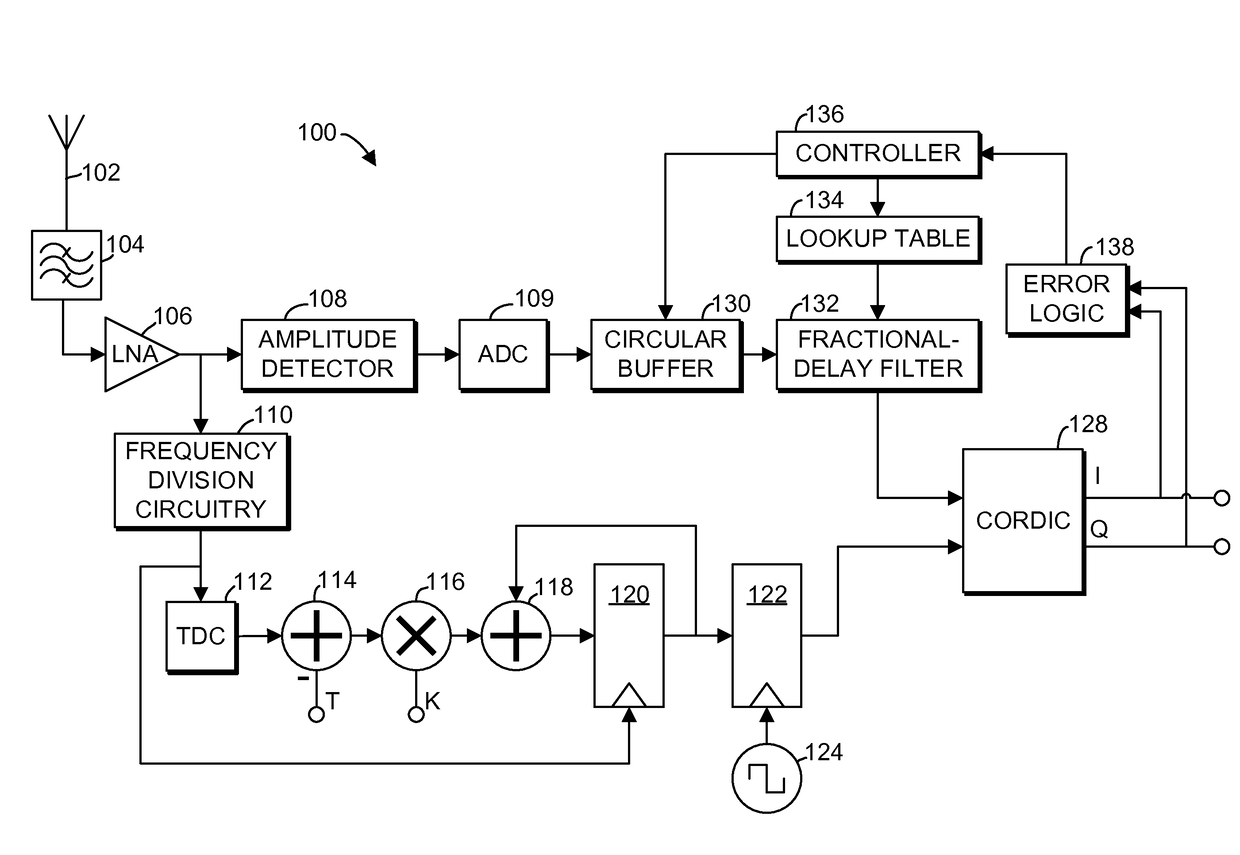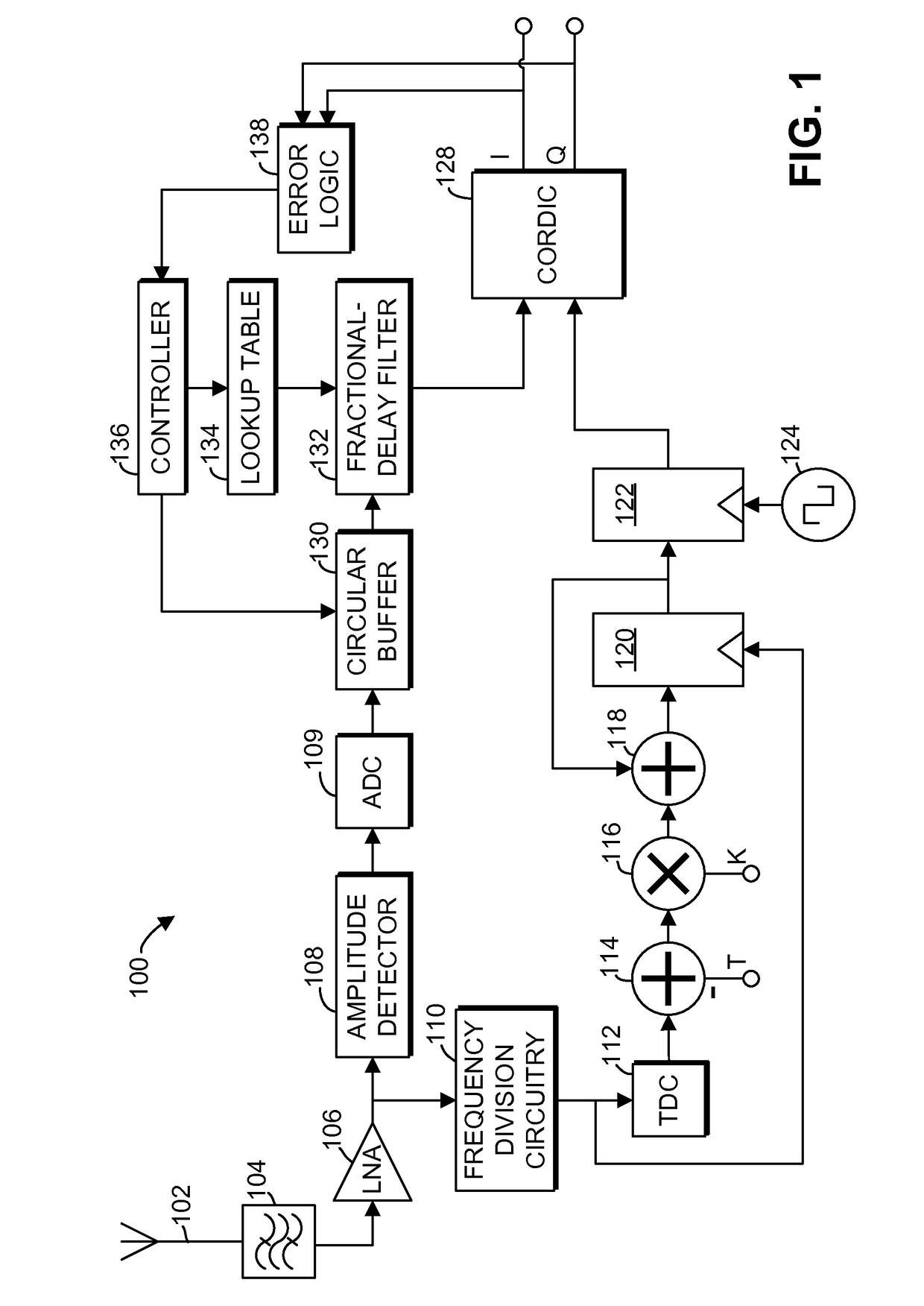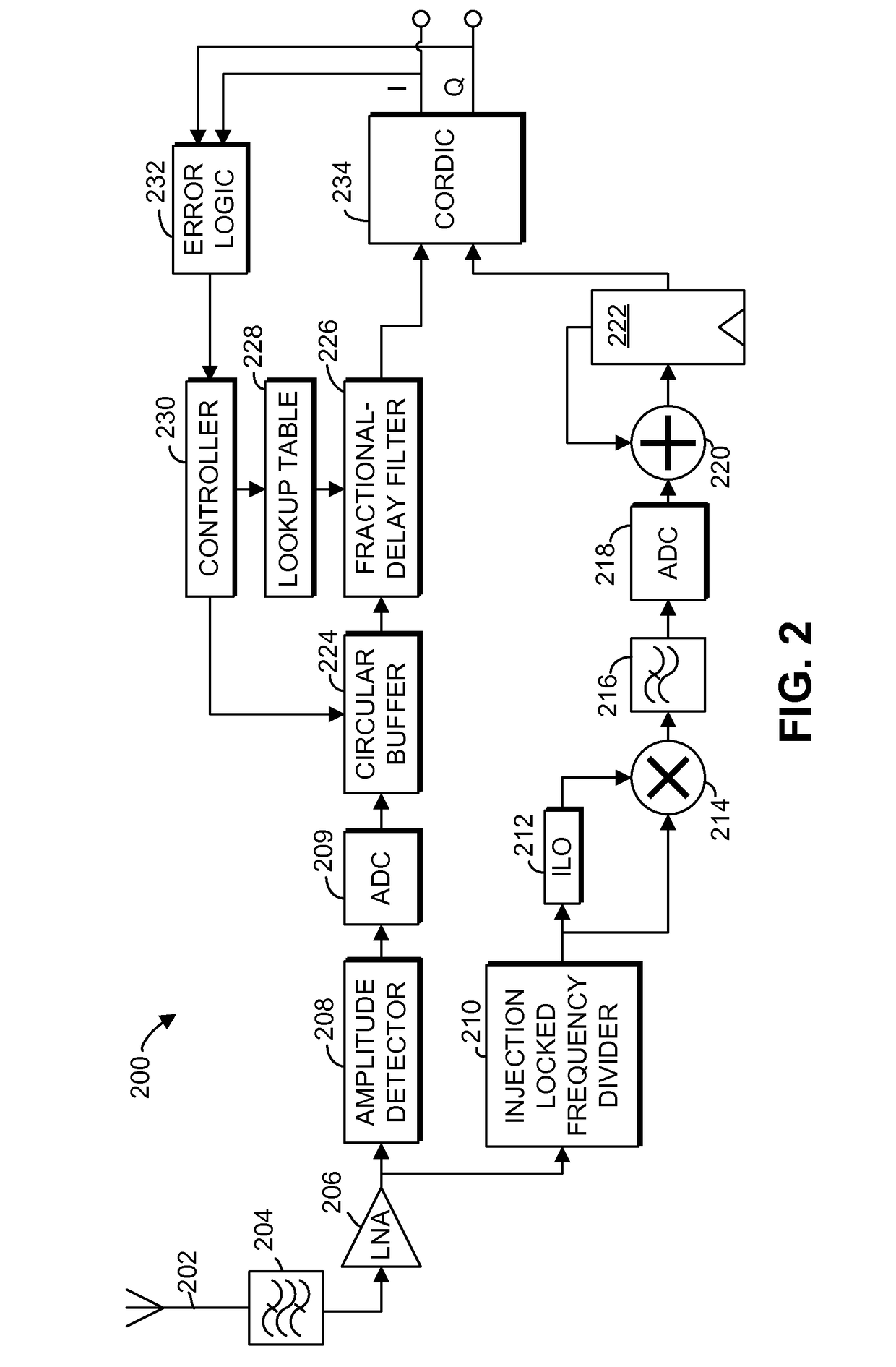Method and apparatus for polar receiver with phase-amplitude alignment
a technology of phase-amplitude alignment and polar receiver, which is applied in the direction of electrical equipment, digital transmission, multiple carrier systems, etc., can solve the problems of poor performance and high bit error rate (ber)
- Summary
- Abstract
- Description
- Claims
- Application Information
AI Technical Summary
Benefits of technology
Problems solved by technology
Method used
Image
Examples
Embodiment Construction
[0012]In an exemplary embodiment illustrated in FIG. 1, a polar receiver 100 receives an incoming radio-frequency (RF) signal through an input node, such as antenna 102. In some embodiments, the incoming radio-frequency signal, also referred to herein as a modulated carrier signal, has a frequency in the range of 2412 MHz-2484 MHz, although the use of the polar receiver 100 is not limited to that frequency range. The incoming radio-frequency signal is filtered by a bandpass filter 104 and amplified by a low-noise amplifier (LNA) 106. The polar receiver 100 operates to receive and decode frequency modulated or phase-modulated radio-frequency signals, such as signals modulated using phase shift keying (PSK) or quadrature amplitude modulation (QAM). As the term is used in the present disclosure, phase-modulated signals include signals that are modulated in phase (e.g., binary phase-shift keying, quadrature phase-shift keying, 8-PSK, or 16-PSK) as well as signals that are modulated in b...
PUM
 Login to View More
Login to View More Abstract
Description
Claims
Application Information
 Login to View More
Login to View More - R&D
- Intellectual Property
- Life Sciences
- Materials
- Tech Scout
- Unparalleled Data Quality
- Higher Quality Content
- 60% Fewer Hallucinations
Browse by: Latest US Patents, China's latest patents, Technical Efficacy Thesaurus, Application Domain, Technology Topic, Popular Technical Reports.
© 2025 PatSnap. All rights reserved.Legal|Privacy policy|Modern Slavery Act Transparency Statement|Sitemap|About US| Contact US: help@patsnap.com



